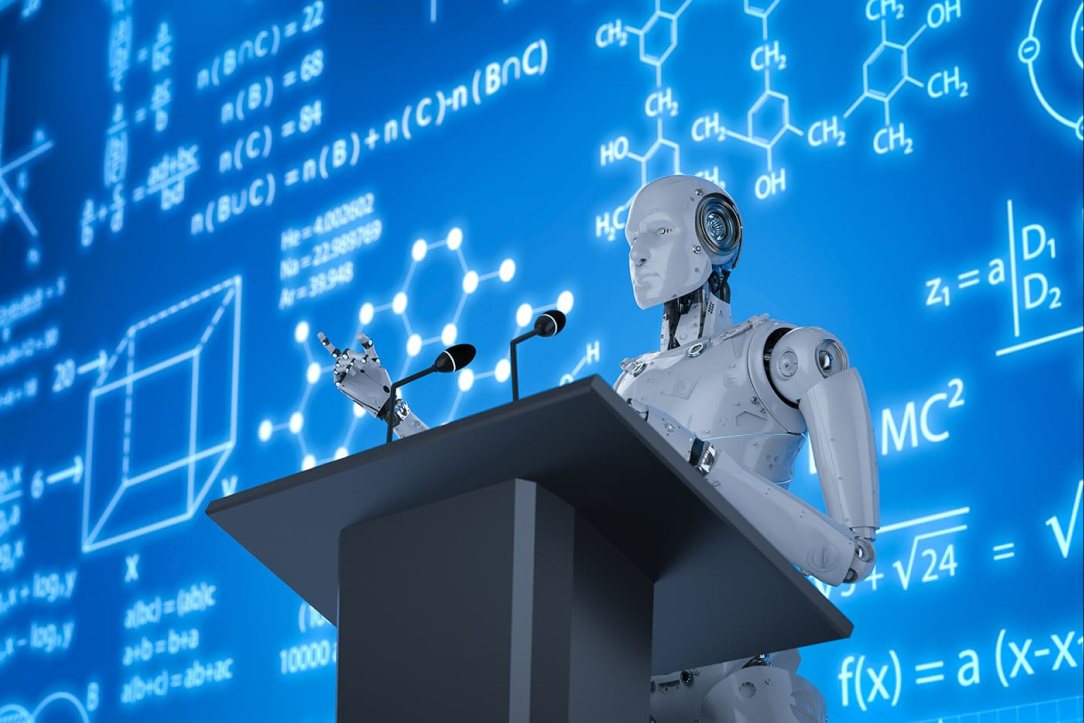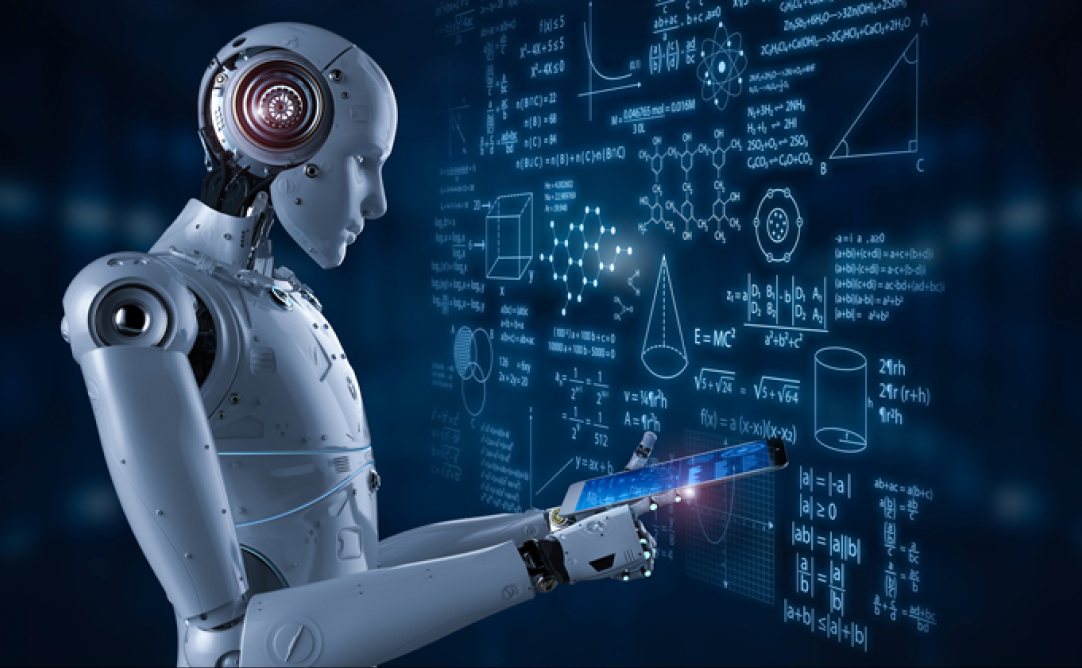We build digital products to help businesses succeed!
Introduction
Imagine a classroom where every lesson is intricately customized to each student’s learning curve—welcome to the dawn of AI education. This isn’t just a distant dream; it’s a rapidly unfolding reality where personalized learning AI is revolutionizing the educational landscape.
A Gartner study, predicts that by 2028, one-third of interactions with generative AI services will use action models and autonomous agents for task completion. In education, autonomous agents can offer personalized learning experiences and adapt teaching methods to the needs of individual students.
This shift promises a seismic impact on learning outcomes, with AI in schools potentially boosting students’ learning capacity by up to 50% and slashing the time to mastery by 40%, as reported by eSchool News. The integration of AI transcends beyond pedagogy; it’s streamlining administrative burdens, liberating educators to invest more time in what truly matters—nurturing the minds of tomorrow. As we navigate through this transformative era, the fusion of AI and education heralds a smarter, more personalized, and efficient future for learners worldwide.
Understanding Artificial Intelligence in Education
Curious about how can AI help with education? AI is integrated into educational settings to improve teaching, learning, and administrative tasks. AI algorithms can personalize learning experiences, provide adaptive feedback, automate administrative tasks, and facilitate data-driven decision-making in education. By leveraging AI, educators can cater to diverse learner needs, optimize instructional strategies, and improve overall educational outcomes.
How Can AI Be Used in Education? 5 Real-Life Examples Across the Educational Spectrum
- Higher Education and Research: AI systems like GPTZero and Copyleaks are widely used in universities for plagiarism detection and maintaining academic integrity. AI also aids in research by sifting through vast amounts of data to identify trends and patterns that can lead to new scientific discoveries.
- Corporate Training and Development: AI-driven platforms like Docebo and EdCast offer personalized learning paths for employees, adapting to their learning styles and professional needs. These platforms help in upskilling and reskilling, aligning with the company’s goals and industry standards.
- Continuing Education for Professionals: AI is used in professional education through adaptive learning platforms that provide customized content based on the learner’s performance and preferences, ensuring lifelong learning and career progression.
- Non-Formal Education and MOOCs: Massive Open Online Courses (MOOCs) platforms like Coursera and edX use AI to personalize the learning experience for millions of learners worldwide, regardless of their formal educational background.
- Educational Administration Beyond Schools: AI is streamlining administrative tasks across educational institutions, from chatbots that handle student queries to predictive analytics that assist in enrollment management and student retention strategies.

AI’s Role in Enhancing Administrative Efficiency with Examples
The educational institutions can significantly reduce the administrative burden on educators, by automating the routine tasks and allowing them to focus on what they do best: teaching and inspiring students. As AI continues to advance, its role in personalized learning AI and administrative efficiency will only grow, marking a new era for AI in schools and beyond. Check out some examples of how AI is being utilized to improve administrative tasks:
Intelligent Resource Management:
AI systems can optimize the allocation of resources, such as classroom space and materials, ensuring that they are used efficiently. This is particularly beneficial for AI in schools, where resources can be scarce and need to be managed wisely.
Streamlined Communication:
Generative AI can assist in drafting communications, from parent newsletters to community engagement announcements. This not only saves time but also ensures consistency and clarity in messaging, which is crucial for effective AI education in India and globally.
Sentiment Analysis for School Climate:
AI tools like ChatGPT can perform sophisticated sentiment analysis on survey data, offering valuable insights into the school climate. This helps educators understand the emotional and social dynamics of their school, which is essential for creating a positive and conducive learning environment.
Grading and Assessment:
AI tools are now capable of grading assignments and assessments, providing immediate feedback to students. This automation supports personalized learning by quickly identifying areas where students may need additional help, aligning with the goals of AI education in India and worldwide.
Scheduling Optimization:
AI algorithms can efficiently handle complex scheduling tasks, such as timetabling classes, organizing bus routes, or coordinating extracurricular activities. This reduces the administrative burden and ensures optimal use of resources and time.
Administrative Chatbots:
AI-powered chat-bots can handle a range of administrative queries from students and parents, from enrolment questions to daily operational details. This application of AI in schools streamlines communication and improves the overall educational experience.
5 AI Education Tools for Teachers: A Game Changer in School Management
Teacherbot
This tool is designed to assist teachers in creating activities and lesson plans across various subjects and levels. It streamlines the lesson planning process, integrating personalized learning AI to cater to diverse student needs. With Teacherbot, teachers can save time on planning and focus more on engaging with their students
Quizgecko
An innovative platform that aids teachers in crafting quizzes and assessments. It utilizes AI to generate questions that are tailored to the curriculum, ensuring that assessments are relevant and challenging. It can transform content into a variety of question types, such as multiple-choice or short-answer, making assessment creation more efficient and tailored to the learning material.
Twee
A unique tool that is designed for English teachers, aiding in lesson tweaking with features like generating questions for YouTube videos, creating dialogues, and crafting exercises related to vocabulary and grammar. It’s a versatile tool that can enhance the teaching of English as a second language
LessonPlans.ai
As the name suggests, this tool specializes in generating detailed lesson plans. It takes into account the teacher’s objectives and the students’ learning styles, making personalized learning AI a practical reality in the classroom. This tool includes step-by-step guides and engaging activities, which can be customized to fit various educational needs and grade levels. AI a practical reality in the classroom. This tool includes step-by-step guides and engaging activities, which can be customized to fit various educational needs and grade levels.
Gradescope:
This tool automates the grading process, providing quick and accurate feedback on student assignments. Gradescope can handle various types of assignments and exams, providing quick feedback and insights into student performance, thus saving valuable time for educators. It’s an example of how AI can be used in schools to enhance the assessment process and provide insights into student performance.
AI Education in India: Pioneering Change in Learning
India’s educational landscape is undergoing a transformative shift with the integration of Artificial Intelligence (AI), paving the way for a future where personalized learning AI and AI in schools are at the forefront of educational strategies. Here’s how AI is pioneering change in learning across the country:
Incorporating AI into the National Curriculum:
The New Education Policy (NEP) 2020 emphasizes the importance of AI education, advocating for the inclusion of AI, coding, and computational thinking right from the primary levels of schooling. This initiative aims to prepare students for the AI-driven economy by equipping them with the necessary skills and knowledge.
Supporting Multilingual Education:
Efforts are underway to enhance Natural Language Processing capabilities for India’s diverse languages, which will support the promotion of multilingualism among students.
Fostering Research and Development:
The National Research Foundation (NRF) is set to promote high-quality research in AI, with a focus on advancing core AI research and developing AI applications to address global challenges.
Tracking Holistic Development:
AI tools are being explored to track and record the life skills training of students, aiming to prepare a comprehensive report card that reflects a holistic view of each learner’s development.
By embracing AI education in India, the nation is not only addressing how AI can be used in schools but also setting a precedent for how AI can help with education on a broader scale, ensuring that the country remains at the cutting edge of educational innovation.

Preparing for the Next Wave: How Can AI Be Used In Schools?
Personalized Learning Experiences
AI’s ability to analyze vast amounts of data on student learning habits and performance is a game-changer, making personalized learning AI a reality.. It can identify individual strengths and weaknesses, allowing for the creation of a personalized curriculum that adapts to each student’s pace and learning style. This approach ensures that every student can achieve their full potential, making education more inclusive and effective.
Intelligent Tutoring Systems
These systems act as personal tutors for students, providing assistance and resources tailored to their specific needs. They can offer additional practice, challenge students with advanced problems, or provide simpler explanations, depending on the student’s progress. This one-on-one attention helps students grasp complex concepts more easily and fosters a deeper understanding of the subject matter.
Administrative Automation
AI can take over many administrative tasks, such as scheduling, attendance tracking, and even communicating with parents. This automation frees up teachers’ time so they can focus on teaching and interacting with their students, rather than getting bogged down by paperwork.
Support for Teachers
With AI education tools for teachers, educators can get assistance in creating lesson plans, grading assignments, and even identifying professional development opportunities. These tools support teachers in their day-to-day tasks and help them grow as educators.
Conclusion
The integration of AI education into our learning systems heralds a transformative era where personalized learning AI and AI in schools are not just concepts but tangible realities enhancing educational experiences. As we ponder on how AI can be used in education, it’s evident that AI’s role extends from creating individualized learning pathways to streamlining administrative tasks, thereby answering the pivotal question of how AI can help with education. Embracing AI education means preparing for a future where learning is a personalized journey, and administrative efficiency is the norm, ensuring that every student and educator can thrive in an ever-evolving digital world.
Offices
India
86P, 4th Floor, Sector 44, Gurugram, Haryana 122003Singapore
#21-02, Tower 2A, The Bayshore condo, Singapore 469974Canada
8 Hillcrest Avenue Toronto ON M2N 6Y6, CanadaUS
31 River CT, Jersey City, New JerseySubscribe to our newsletter
Our Services
Top Reads
India
86P, 4th Floor, Sector 44, Gurugram, Haryana 122003
Singapore
#21-02, Tower 2A, The Bayshore condo, Singapore 469974
Canada
8 Hillcrest Avenue Toronto ON M2N 6Y6, Canada
US
31 River CT, Jersey City, New Jersey
Contact us
info@primathon.in
+91-9205966678
Reviews


